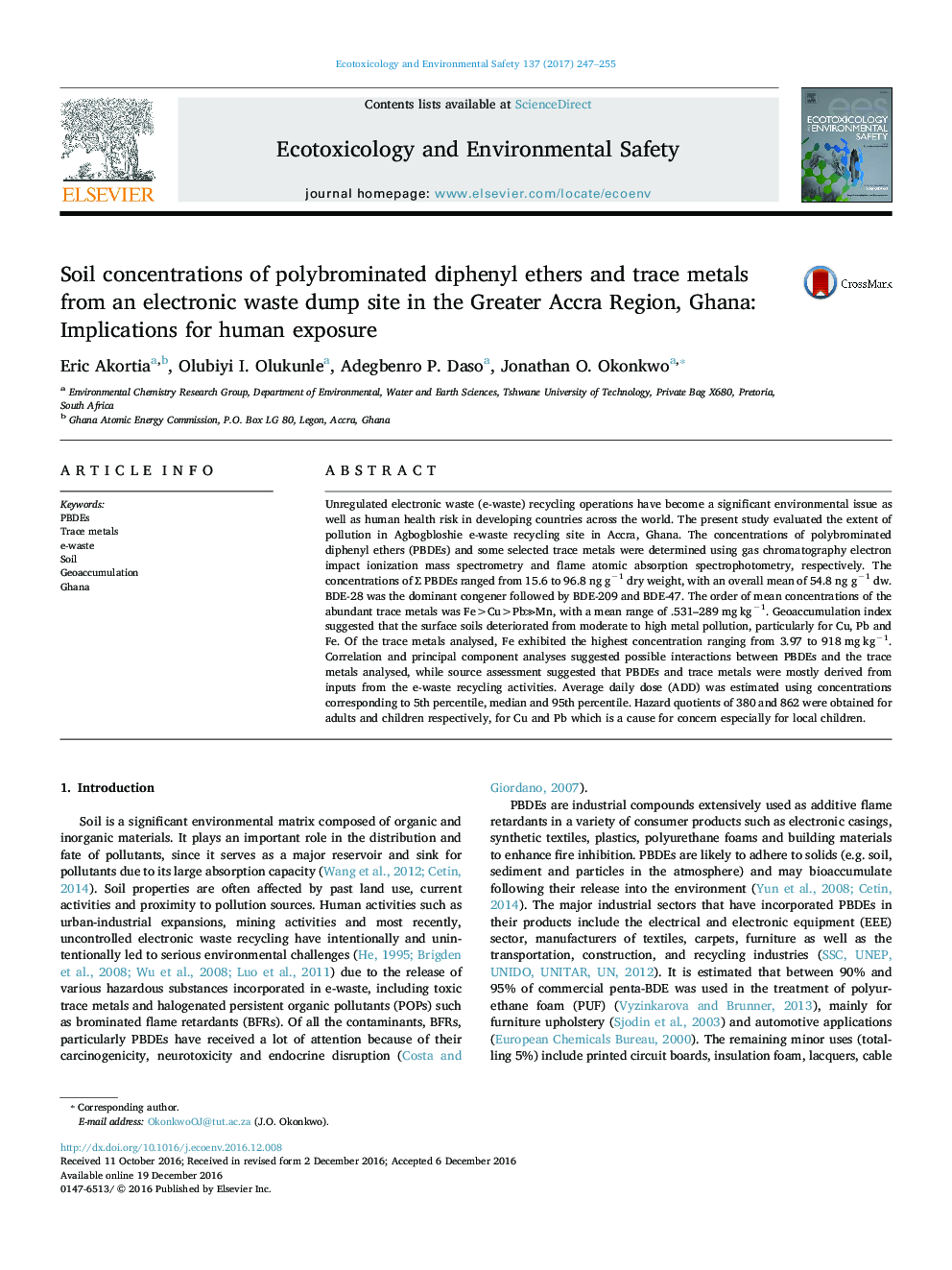| کد مقاله | کد نشریه | سال انتشار | مقاله انگلیسی | نسخه تمام متن |
|---|---|---|---|---|
| 5748067 | 1618927 | 2017 | 9 صفحه PDF | دانلود رایگان |
- One of the few studies to assess co-contamination of PBDEs and trace metals at Agbogbloshie informal e-waste dump site.
- Paucity of data about human exposures to these toxicants at the site.
- BDE-28 was the predominant congener, indicating the degradation of highly brominated BDEs.
- Strong positive correlations between some PBDEs and trace metals.
- Health risks associated with PBDEs, copper and lead were of concern especially for local children.
Unregulated electronic waste (e-waste) recycling operations have become a significant environmental issue as well as human health risk in developing countries across the world. The present study evaluated the extent of pollution in Agbogbloshie e-waste recycling site in Accra, Ghana. The concentrations of polybrominated diphenyl ethers (PBDEs) and some selected trace metals were determined using gas chromatography electron impact ionization mass spectrometry and flame atomic absorption spectrophotometry, respectively. The concentrations of â PBDEs ranged from 15.6 to 96.8 ng gâ1 dry weight, with an overall mean of 54.8 ng gâ1 dw. BDE-28 was the dominant congener followed by BDE-209 and BDE-47. The order of mean concentrations of the abundant trace metals was Fe>Cu>Pbâ«Mn, with a mean range of .531-289 mg kgâ1. Geoaccumulation index suggested that the surface soils deteriorated from moderate to high metal pollution, particularly for Cu, Pb and Fe. Of the trace metals analysed, Fe exhibited the highest concentration ranging from 3.97 to 918 mg kgâ1. Correlation and principal component analyses suggested possible interactions between PBDEs and the trace metals analysed, while source assessment suggested that PBDEs and trace metals were mostly derived from inputs from the e-waste recycling activities. Average daily dose (ADD) was estimated using concentrations corresponding to 5th percentile, median and 95th percentile. Hazard quotients of 380 and 862 were obtained for adults and children respectively, for Cu and Pb which is a cause for concern especially for local children.
Journal: Ecotoxicology and Environmental Safety - Volume 137, March 2017, Pages 247-255
